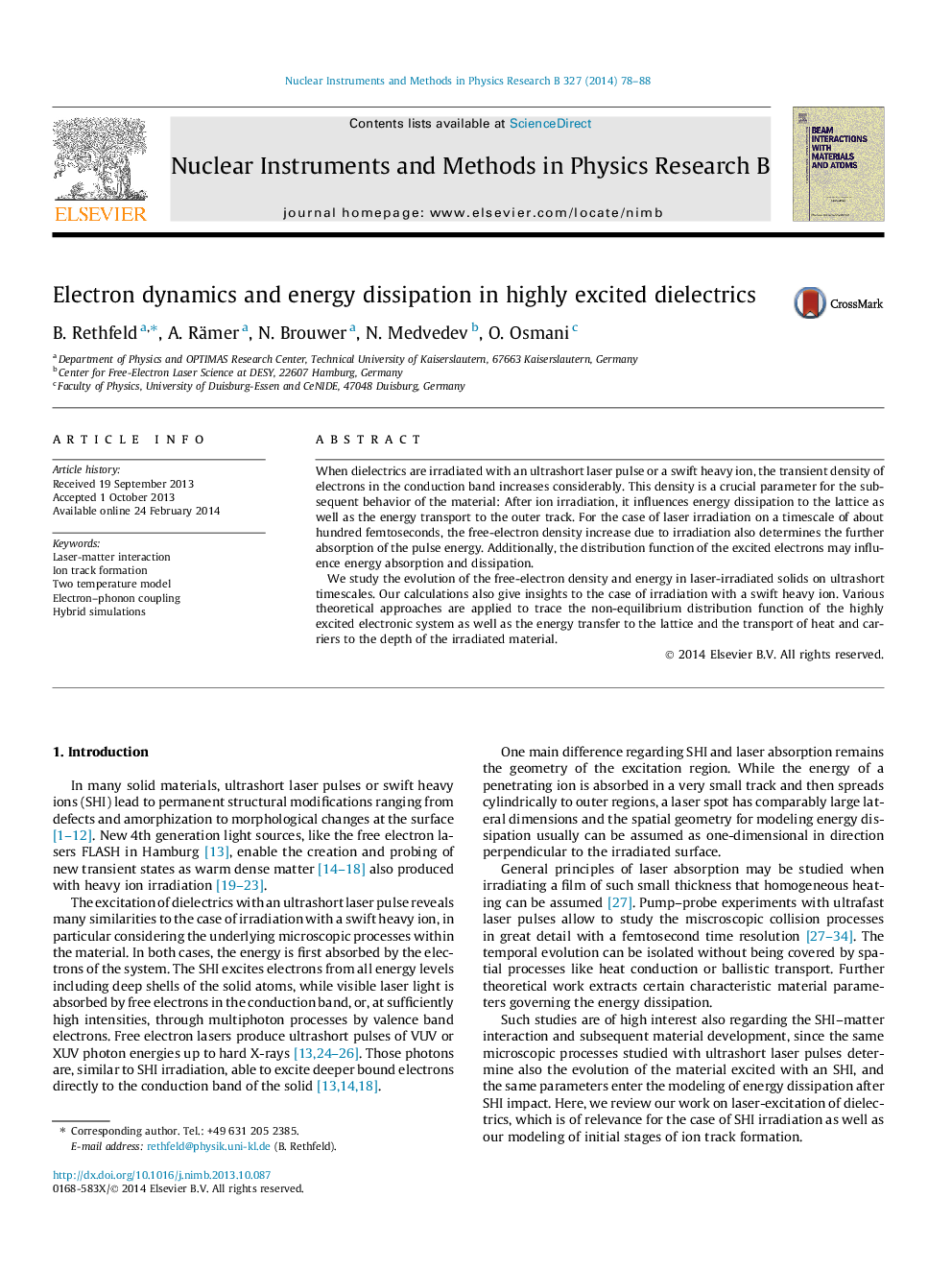| Article ID | Journal | Published Year | Pages | File Type |
|---|---|---|---|---|
| 1680848 | Nuclear Instruments and Methods in Physics Research Section B: Beam Interactions with Materials and Atoms | 2014 | 11 Pages |
When dielectrics are irradiated with an ultrashort laser pulse or a swift heavy ion, the transient density of electrons in the conduction band increases considerably. This density is a crucial parameter for the subsequent behavior of the material: After ion irradiation, it influences energy dissipation to the lattice as well as the energy transport to the outer track. For the case of laser irradiation on a timescale of about hundred femtoseconds, the free-electron density increase due to irradiation also determines the further absorption of the pulse energy. Additionally, the distribution function of the excited electrons may influence energy absorption and dissipation.We study the evolution of the free-electron density and energy in laser-irradiated solids on ultrashort timescales. Our calculations also give insights to the case of irradiation with a swift heavy ion. Various theoretical approaches are applied to trace the non-equilibrium distribution function of the highly excited electronic system as well as the energy transfer to the lattice and the transport of heat and carriers to the depth of the irradiated material.
